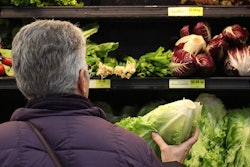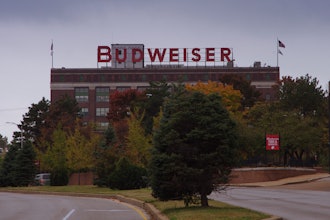With recent advancements in imaging, it is more cost-effective than ever for food manufacturers and processers to invest in new technologies to ensure the safety and quality of our food. Historically, food inspection required trained human inspectors to perform visual screening operations. These trained inspectors scanned conveyor belts to identify and eliminate defective products — a relatively slow and inefficient process due to the limits of the human eye, human error and fatigue.
Imaging systems provide faster and more accurate inspection, and some of today’s vision systems can even “see” below the surface of a product and find hidden or chemical defects not visible to the human eye. As a result, automated food sorting systems offer a much more efficient solution because they can more quickly and accurately filter out defective products that fail to meet quality standards.
How Optical Sorters Work
Imaging systems, also referred to as optical sorters, are today’s “go-to” solution for food inspection. They can non-destructively inspect food products and maintain a level of objectivity that human vision simply cannot. Optical food sorting systems can also minimize waste and labor costs.
Whatever food product being inspected, most food sorting systems consist of four major components. The first component is the feed system. The feed system helps spread the product evenly onto a conveyor belt, lane or free-fall chute. From there, an optical system — which can consist of a color (visible), hyperspectral, or an X-ray imaging system — is strategically positioned either above or below the products being inspected, and it scans the products travelling through the chute or along the conveyor belt for defects. Third, image processing software compares the objects on the belt, lane or chute to user-defined pass or fail thresholds to grade the moving objects. These thresholds may be based on spectral, size, shape or other specifics depending on the food type. Last, a separation system, which may take the form of compressed air for small produce or mechanical devices for larger objects, pinpoints defects and deflects, or redirects, the items to a reject pile.
Visible and Non-Visible Defects
Defects are typically categorized into two groups — visible and non-visible defects. Visible defects are defects that can easily be detected by the human eye. Some examples are discolorations, blemishes, broken or split objects, and objects that fail to meet a specific length, width, diameter or area. Non-visible defects are those that cannot easily be detected by the human eye and might include soft, molded or rotten foods, or foreign materials such as worms, snails, small plastics, metals and glass that can find their way into food items. Usually, color imaging systems are used to spot visible defects, and hyperspectral imaging is able to reveal both visible and non-visible defects.
Food Inspection with Color Imaging
Current food inspection systems use color imaging to detect defects on products moving across a conveyor belt. These imaging systems essentially see the same defects the human eye can see, but can do so faster and more objectively, maximizing throughput. By comparing the color of food items to some predetermined color criteria, these imaging systems can efficiently sort and grade food products. Color imaging systems are typically able to detect defects like blemishes or bruises, and ripeness or freshness levels for nuts, vegetables, fruit, meat and seafood. These imaging systems are also able to identify foreign materials like pieces of plastic and wood that may be present in a stream of produce.
Some of the technologies used in color imaging systems for food inspection today are three-chip cameras and trilinear cameras. With trilinear cameras, a single sensor is equipped with three lines that are sensitive to red, green and blue, respectively. Each of the three arrays captures one of the three colors simultaneously, but at slightly different locations as an object falls down a chute or moves across a conveyor belt. To form a full image, the camera must compensate for the spatial separation — also called spatial correction — by buffering the first and second arrays to match the third one.
Move Wavelength Bands with Hyperspectral and Multispectral Imaging Systems
Hyperspectral and multispectral imaging use more wavelength bands than just RGB color. Hyperspectral imaging is particularly desirable for food inspection because of its ability to nondestructively test and determine the chemical and physical composition of a product. In the food industry, where defects may be present both on the surface and within a product, it is useful to have a system that can detect both internal and external defects.
Different organic materials absorb light at different wavelengths across the electromagnetic spectrum based on their composition. This enables each material to have a specific “fingerprint” by which they can be identified. The ability of hyperspectral imaging to discriminate based on chemical composition is highly useful for sorting items that cannot simply be sorted based on physical characteristics like RGB color or shape. Hyperspectral imaging serves as an excellent inspection system for the food industry for invisible defects like mold or toxins.
However, hyperspectral imaging still faces challenges in terms of data processing capacity and cost. That’s why multispectral imaging systems, which use fewer bands, have been successfully adopted in food sorting applications.
Inspection with X-Rays
X-rays — a form of electromagnetic radiation that is invisible — are increasingly being used in the food processing industry. As an X-ray enters food, it loses some of its electromagnetic energy, and as it leaves the food product, the sensor in the inspection system is then able to convert the X-ray into a greyscale image that shows the interior of the food. Dense contaminants in a food product show up darker on the greyscale image, allowing for easy identification.
X-ray systems have many applications in the food inspection process such as detecting foreign materials like metals in baby food and inspecting product seals and packages. X-ray systems are also widely used for inspecting dried fruits, nuts and seafood. Advanced X-ray systems can simultaneously perform in-line quality checks, measure the mass of a product, count products, identify missing or broken products, and monitor fill level. All of these features of X-ray make it a very cost-effective and efficient food inspection system.
While many consumers are concerned with their food being exposed to radiation, it is important to note that as food is inspected by an X-ray system, it usually does not spend more than a second in an X-ray beam, thus receiving a very low dose of radiation that is practically harmless.
Conclusion
With pressure to deliver higher quality and safer products, food and beverage producers need to implement improved inspection and sorting systems. Additionally, the risk of a product recall is another reason that food producers seek out more reliable inspection systems that can guarantee a level of quality and confidence when it comes to detecting defective products. As a result, the use of advanced imaging technology for food inspection will continue to rise, as these systems enable producers to comply with tightening government regulations and the increasing expectations of consumers.
Glen Ahearn is a Sales & Application Support Manager at Teledyne DALSA.






















